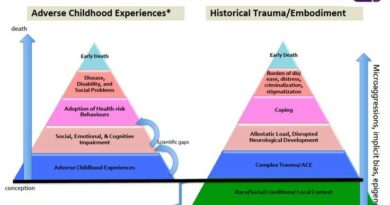The Divine Blueprint: Discovering the Symbolic Significance of Comparing Man to the Sun and Woman to the Moon
The Divine Blueprint: Discovering the Symbolic Significance of Comparing Man to the Sun and Woman to the Moon

The Divine Blueprint: The symbolism of comparing man to the sun and woman to the moon
Let’s explore the divine blueprint for men and women. Throughout history, humanity has often used symbolism to understand and explain complex concepts. One such symbolism is comparing man to the sun and woman to the moon. This metaphorical association highlights the unique qualities and characteristics that differentiate the two genders. By delving into this symbolism, we can better understand the divine design behind the differences between men and women. I hope that I can inspire a collective appreciation for the unique design of our gender counterparts, simultaneously creating a firmer foundation through which we engage one another.
Understanding the divine design
The comparison of man to the sun and woman to the moon not only reflects the physical differences between the genders but also represents their inherent qualities and roles in the grand tapestry of life. Just as the sun radiates warmth and energy, men are often associated with traits such as strength, assertiveness, and outward expression. On the other hand, the moon symbolizes calmness, intuition, and emotional depth, which are often attributed to women.
How men and women differ hormonally
To truly grasp the significance of this symbolism, it is essential to explore the hormonal differences between men and women. Men operate on a 24-hour hormonal cycle, with testosterone levels fluctuating throughout the day. In the morning, testosterone is at its highest for men, leading to increased energy, enhanced communication skills, and heightened focus and aggression. As the day progresses, testosterone mellows out, and its levels diminish by evening.
Women, on the other hand, operate on a four-week hormonal cycle that governs their reproductive system. During the menstruation phase, which occurs when a woman is bleeding, estrogen and progesterone levels are at their lowest. This phase is characterized by a decrease in energy levels and a shift in mood. Understanding these hormonal fluctuations provides valuable insights into the differing behaviors and emotions experienced by men and women.
The impact of hormones on behavior and mood
Hormones play a significant role in shaping behavior and mood, and their effects are evident in both men and women. The higher testosterone levels in men during the morning contribute to their increased energy, confidence, and assertiveness. This hormonal surge makes them more communicative, focused, and even more aggressive in their pursuits.
Women, during the menstruation phase, experience the lowest levels of estrogen and progesterone. This hormonal dip can lead to feelings of fatigue, irritability, and emotional sensitivity. It is essential to recognize and respect these hormonal fluctuations to foster understanding and empathy in relationships.
Get your signed copy of Marion Wallace’s book, Ghettos Forgotten Daughters!
Exploring the energetic, communicative, focused, and aggressive nature of men
In the morning, when testosterone levels are at their peak, men exhibit a remarkable surge of energy. This increased energy translates into heightened productivity, drive, and focus. Men are often more assertive and confident during this time, making it an opportune moment for effective communication and decision-making.
Moreover, the morning surge of testosterone also contributes to a more aggressive nature in men. While aggression is often seen as a negative trait, it can be channeled positively into assertiveness and determination. Understanding and appreciating this aspect of male behavior allows for better collaboration and synergy between the genders.
Understanding the mellowing out of testosterone in men during the afternoon and evening
As the day progresses, testosterone levels in men gradually decline. This decline leads to a mellowing out of their energy levels, communication skills, and assertiveness. Men become less aggressive and more inclined towards relaxation and introspection during the afternoon and evening.
This shift in energy can be seen as a natural rhythm that allows men to recharge and prepare for the next day. It is important to honor this transition and create space for men to unwind and rejuvenate after a day filled with activities and responsibilities.
The 24-Hour Hormonal Cycle for Men
In the morning, a man’s testosterone level is at its peak, infusing him with energy, communication skills, focus, and a touch of aggression. During this time, his virility reaches its zenith, making him ardently driven towards both sexual interactions and achieving his pursuits.
With the testosterone count soaring in the morning, a man’s frontal lobes, responsible for higher-order reasoning, might be slightly offline. Operating off pure masculine instinct during this phase, he’s primed for action and decisive responses.
As the day progresses into the afternoon, his testosterone levels mellow, but he remains energetic and focused. At this point, he becomes more open to collaboration, eager to brainstorm ideas, and interested in dating or social interactions.
By the evening, his testosterone count has diminished, ushering in a softer and more low-key state of mind and behavior. During this phase, his energy and libido are at their lowest, leading him to be more inclined to relax and seek companionship. It’s important to note that a bottomed-out testosterone level makes him mentally vulnerable, rendering him hypersensitive to his environment. Therefore, creating a peaceful and nurturing home becomes vital during this stage of his day. It is during this time that he prepares for the final phase: sleep, where his testosterone levels are replenished, gearing him up for another day of vitality and productivity.
The divine design for men enables them to excel at daily repetition, making them ideally suited for tasks associated with provision and protection. Metaphorically, men dim like the setting sun as the day progresses. Honoring the third phase of relaxation and peace is crucial for harnessing the most restorative potential from sleep, preparing them to embrace tomorrow’s challenges with renewed vigor.
Understanding the 24-hour hormonal cycle can empower men to optimize their daily rhythms, ensuring a harmonious balance between vitality, productivity, and emotional well-being throughout the day.
Get Dr. Rick Wallace’s 26th book, Transcendent: The Remarkable Ability to Rise Above the Chaos to Win!
Examining the lowest levels of estrogen and progesterone in women during the menstruation phase
For women, the menstruation phase brings about a significant hormonal shift. Estrogen and progesterone levels, which are responsible for regulating the reproductive system, reach their lowest point. This decline in hormones can result in physical discomfort, mood swings, and emotional sensitivity.
Acknowledging and understanding the impact of these hormonal fluctuations is crucial in creating a supportive environment for women during their menstruation phase. By providing empathy, patience, and care, we can alleviate the challenges women may face and foster a more harmonious relationship.
The Four-Week Hormonal Cycle of Women
Women, like the moon, operate on a four-week hormonal cycle, each phase serving a divine purpose, guiding them through unique emotional and cognitive landscapes.
In the first phase of menstruation, as estrogen and progesterone levels reach their lowest, her energy levels decrease while intuition and empathy elevate. This shift is influenced by changes in the hippocampus, the region responsible for emotions and memory. Women respond to these hormonal shifts, and their senses become heightened. It is crucial to understand that during this phase, women are not moody or irrational; they are simply attuned to their body’s natural rhythms.
Heightened sensitivity during this phase allows her to read people and situations with unparalleled precision, and her inner voice becomes louder and clearer. The first phase demands that she takes on less, turns inward, and embraces reflection. Women should embrace and appreciate this knowledge, while men can use it as a tool to better understand how and when to engage with the women in their lives.
As the second phase begins, follicular estrogen starts to rise, and her energy returns. The prefrontal cortex comes online, endowing her with the ability to engage in strategic action and emotional intelligence. This is the best time for tough conversations, as her strategic planning and increased emotional intelligence prepare her for the most significant phase: ovulation.
During ovulation, estrogen levels peak, propelling her to her highest mood, cognitive ability, and physical prowess. The brain experiences an increase in serotonin, dopamine, and norepinephrine, making her almost magnetic in attracting people and favorable situations. Ovulation is a period of heightened vitality and social charm.
In the final phase, luteal progesterone reaches its peak, leading to the release of BDNF, a molecule that enhances neuroplasticity in the brain. Unlike men, who operate on a 24-hour cycle, women excel in navigating change. Every month, women go through a cycle of evolution, shedding what no longer serves them and forging new paths. All four phases are of divine origin and serve monumental purposes. Women must learn to understand and honor this rhythmic cycle to awaken unbridled potential and power.
Embracing the wisdom of the four-week hormonal cycle empowers women to embrace their changing selves and utilize each phase’s unique strengths. By recognizing and respecting this natural rhythm, women can unlock their full potential and thrive in their personal and professional lives.
The significance of hormonal differences in relationships and communication
The symbolic comparison of a man to the sun and a woman to the moon serves as a reminder of the divine blueprint behind the differences between the genders. It highlights the unique qualities and strengths that each gender brings to the table. By recognizing and appreciating these differences, we can cultivate more harmonious relationships and effective communication.
Understanding the hormonal differences between men and women allows us to navigate various phases and cycles in a relationship with grace and compassion. By embracing and accommodating these differences, we can create an environment that nurtures the needs and well-being of both partners.
Embracing and appreciating the divine blueprint of man and woman
In conclusion, the symbolism of comparing man to the sun and woman to the moon offers profound insights into the divine design of gender differences. By understanding hormonal fluctuations and their impact on behavior and mood, we can foster greater empathy, respect, and appreciation for one another.
Rather than viewing these differences as obstacles, we should embrace them as a gift that contributes to the richness and diversity of human experience. When we honor and celebrate the unique qualities of both men and women, we create a harmonious balance that allows for profound personal growth, fulfilling relationships, and a more enlightened society.
Conclusion
The symbolism of comparing man to the sun and woman to the moon provides a profound perspective on the divine blueprint of gender differences. By acknowledging and understanding the hormonal variances between men and women, we can approach relationships and communication with empathy and respect. Embracing these differences allows us to create harmonious and fulfilling connections, leading to personal growth and a more enlightened society. I do hope that each gender explores the ideas set forth in this article through a dichotomous lens, viewing both sides of the spectrum for enrichment and understanding.
CTA: Embrace the divine blueprint of man and woman by fostering empathy and understanding in your relationships. Celebrate the unique strengths and qualities each gender brings to the table. By doing so, you can cultivate harmonious connections and contribute to a more enlightened society.
Visit our online store for more resources!
Additional reading:
God’s Promise: How to Tap into the Inherent Success Woven into Your DNA
Developing a Fearless Mindset: Unlocking Your True Potential
The Importance of Protecting Little Black Girls
The Hidden Superpower: How Self-Awareness & Emotional Intelligence Can Transform Your Life





